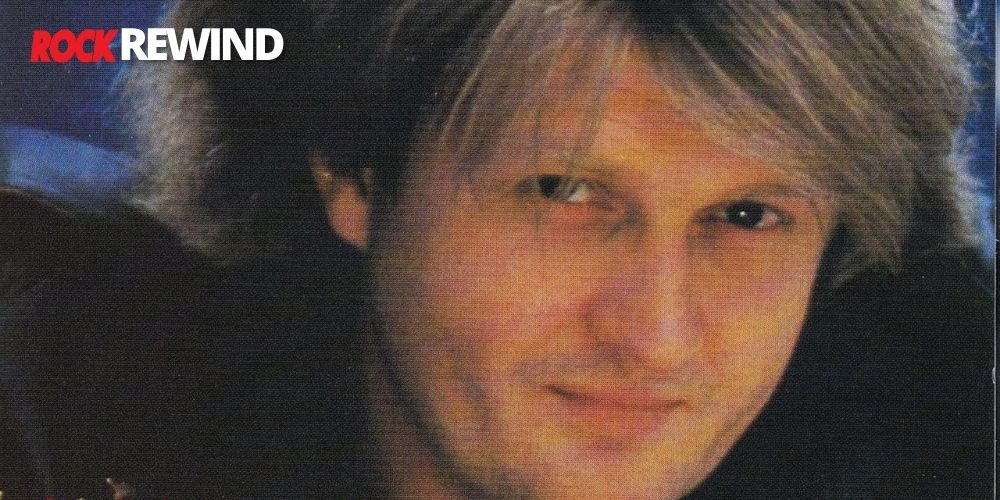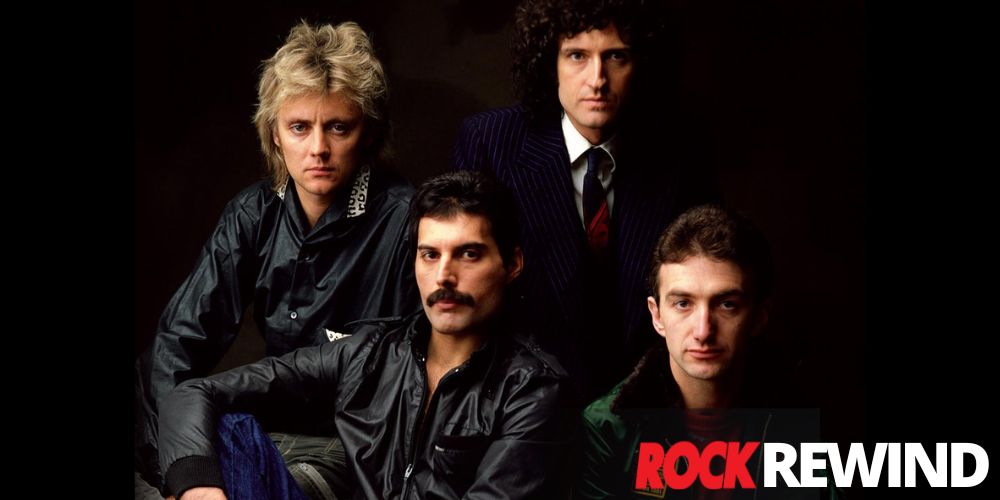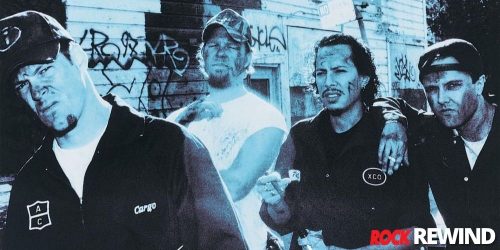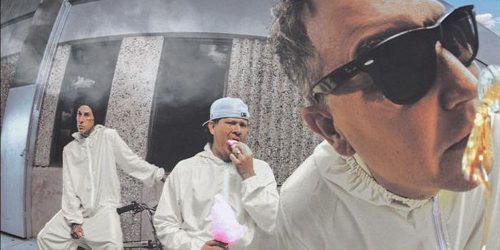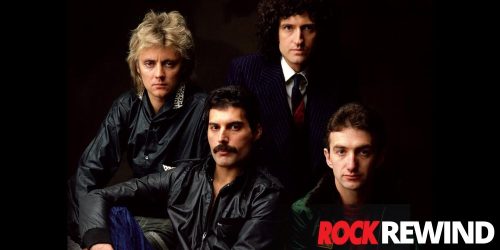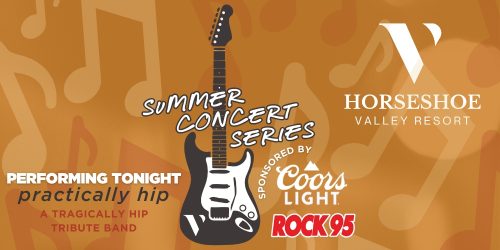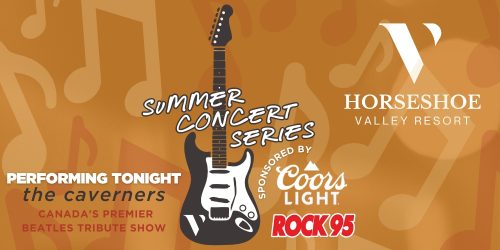Rock Rewind: The Rise Of The Eagles
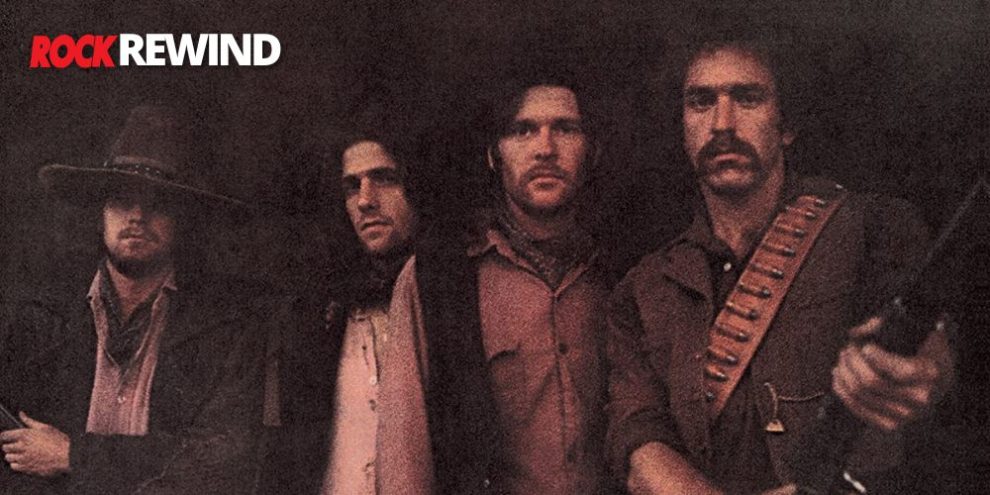
The Eagles are one of the most successful and beloved American rock bands of all time. Their unique sound and impressive songwriting abilities have earned them a permanent place in the pantheon of rock music.
With hits like "Hotel California," "Take It Easy," and "Desperado," the Eagles have sold millions of records and won numerous awards.
But how did this iconic band come to be?
Let’s take a closer look at the history of the Eagles, from their formation in the early 1970s to their rise to fame to their break up and beyond.
How The Eagles Came Together
The Eagles weren’t a group of friends who grew up playing together and headed to LA to make it big. Each had come to LA on their own journey.
Randy Meisner moved to California in 1964 with the band The Soul Survivors (later The Poor). Before becoming a part of the Eagles, he also played with Poco (formerly Pogo) and Rick Nelson’s Stone Canyon Band.
Bernie Leadon came to California with Hearts and Flowers. Before becoming a part of the Eagles, he also played for Dillard & Clark and Flying Burrito Brothers.
Glenn Frey ended up there when he wanted to reconnect with his girlfriend. While there he met JD Souther and the two formed a duo called Longbranch Pennywhistle and signed on with Amos Records in 1969.
Don Henley came to California with a Dixieland band called Shiloh (formerly Felicity, formerly Four Speeds). In 1969 the band met Kenny Rogers, who eventually helped them get signed to Amos Records. In 1970, Shiloh moved to LA. That same year, Frey and Henley met at The Troubadour in LA and became acquaintances.
The following year, in 1971, Shiloh broke up.
It was around the same time that producer John Boylan and singer Linda Ronstadt were looking to put a band together. Having heard Ronstadt sing, Henley had already sent Boylan some songs he hoped the singer would record. While the tunes weren’t a good match, Ronstadt liked Henley’s playing.
In an interview with Billboard, Ronstadt shared, “I heard [Henley] play the drums when I was walking through the room at the Troubadour and I thought he was such a good drummer. He had country mixed with rock in a way that didn’t compromise either genre. So I said, ‘Let’s see if we can get him to play drums,’ and John went to talk to him and he said, ‘All right.’”
Ronstadt goes on to explain, “So we hired [Henley] to play drums. And then I needed a guitar player. I couldn’t take Bernie Leadon ’cause he was working with the Flying Burrito Brothers, so I said ‘All right, I’ll get Glenn Frey. He can play really good guitar.’
“I was living with J.D. Souther then, and [Frey] was J.D.’s music partner. They had a group called Longbranch Pennywhistle. They were kind of breaking up; they decided to go their separate ways, but they were still really good friends. So I asked Glenn if he would come on that tour with us.”
A New Band Is Formed
Frey and Henley ended up rooming together and quickly discovered each other’s talent. Soon Henley was going on about how he and Frey were going to start their own band.
Ronstadt was on board with the idea, suggesting Bernie Leadon for guitar. Boyland recommended Rancy Meisner on bass.
Soon after, Meisner and Leadon joined Frey and Henley. The quartet agreed that they would continue to play with Ronstadt until they were able to get their own record deal.
But that didn’t take long at all ... the group only played one live show together with Ronstadt before signing on with David Geffen’s new label, Asylum Records.
Changing Their Name To The Eagles
In October the group played their first gig as Teen King and the Emergencies, unable to settle on a name.
While there are a few different stories about where the name Eagles came from, there’s no doubt that the name came up during a peyote and tequila-filled trip to the Mojave Desert.
Members Come And Go
The Eagles went on to release 2 charting albums. Their self-titled debut album had 3 top 40. Their second album, Desperado, was less successful but still charted on the Billboard 200 and Hot 100.
By this time, Henley and Frey were co-writing most of the albums and began taking on more leadership roles in the band.
Over the next few years, the Eagles would see a number of members come and go.
RELATED: Over the years, AC/DC also saw many changes to their lineup ...
Felder Joins The Band
Up until now, the Eagles were a country rock band. But the third album took on a more hard rock sound.
Wanting to add slide guitar for the song “Good Day In Hell,” the band brought on Don Felder. Impressed by his playing, the band invited Felder to become a full-time member in 1974.
Joe Walsh Replaces Leadon
In 1975 the band released their breakthrough album, One Of The Nights, which was the first of 4 #1 albums in a row. Following its release, Leadon left the band. He was dissatisfied with the band's decision to move away from country.
Joe Walsh replaced Leadon on guitar.
Timothy B Schmit Replaces Meisner
The band's next studio release was Hotel California. It would be the last to feature Meisner, who left the band after a confrontation with Frey. Not feeling well, Meisner did not want to perform “Take It To The Limit” during a concert in Knoxville. Frey and he got into a fight about his reluctance to perform, leading to a physical altercation. Meisner left and the band slowly froze him out.
At the end of the tour, he decided it was time to part ways, and returned to his family in Nebraska.
He was replaced by Timothy B Schmit.
A Long Night At Wrong Beach
In 1980, during a performance in Long Beach, California, tensions ignited between Frey and Felder.
Felder explains, “Glenn committed us to playing a benefit gig at the Long Beach Arena on July 31, 1980, for the reelection of the liberal California senator Alan Cranston, a night that would become known as ‘Long Night at Wrong Beach’.
Glenn knew I wasn’t comfortable with a rock band doing a show for politicians. His hostility was compounded when Mrs [Norma] Cranston walked up to me backstage to say hello just before we went onstage. “Hello,” I replied. “Nice to meet you . . .” As she walked away, I added, under my breath: “I guess.”
Frey and Felder then spent the performance threatening one another with lines like: "Only three more songs until I kick your ass, pal” and "I'm gonna kick your ass when we get off the stage."
When the show finished, everyone cleared out. Thinking he was alone, Felder took a page from Joe Walsh’s book to help release some of the tension. He began smashing one of his guitars against a concrete column.
Turns out he wasn’t the only one there.
Felder explains, “I turned and saw the Cranstons standing right behind me, their mouths agape. A few feet away stood a stony-faced Glenn. This had had little or nothing to do with the Cranstons, but Glenn thought I did that right in front of them to drive it up his butt.”
The Band Breaks Up Takes A Vacation
The fight eventually led to the band’s 15-year hiatus.
But first, they had to complete a live record for Elektra Records.
In Bill Szymczyk's words, the Eagles were “fixing three-part harmonies courtesy of Federal Express.” Frey refused to speak to the others and recorded his part in LA while the others were in Miami.
Felder shared, “I blame the drugs more than anything for what happened with the Eagles. We went from a bunch of young guys hanging out together to five men who couldn’t stand each other. Not that I was going to complain at the time. I honestly didn’t know how much I had in the bank back then. I was a rock’n’roll star, and the business managers could see to the cash flow.”
The Eagles Are Back Together
For the next 15 years, each member pursued a solo career. Walsh had one success followed by albums that were not as well received. Henley, Frey, and Schmit each achieved commercial solo success. Felder released a single solo album and contributed to the Heavy Metal movie soundtrack.
In 1994 the 5 members formally reunited along with supplemental band members like Scott Crago and John Corey. During their first show, Frey opened with, “For the record, we never broke up, we just took a 14-year vacation.”
The tour and album release that followed were a success. The album debuted at number one and produced 2 top 40 hits. The tour paused for a few months in 1994 while Frey dealt with medical issues and continued until 1996.
Two years later, the band was inducted into the Rock and Roll Hall of Fame. This was the first and only time that all the Eagle members played together, including Leadon and Meisner.
Felder Gets Replaced … Sort Of
December 31, 1999, was the last time that Felder would play with the band before being fired and filing a suit against Henley, Frey, and other unnamed defendants in 2001.
Felder reportedly sought $50 million for wrongful termination, breach of implied-in-fact contract, and breach of fiduciary duty. Henley and Frey countersued for breach of contract because Frey had written a tell-all book about the band called Heaven and Hell: My Life In The Eagles.
Eventually, the lawsuit was dismissed, having been settled outside of court.
Steuart Smith essentially took over for Felder in 2001, playing guitar, mandolin, keyboards, etc. However, he was a touring member and not a full member.
Six years later, the band, which now consisted of Frey, Henley, Walsh, and Schmit, released their first album of all-new material since 1979. Available online and at Walmart and Sam’s Club, the album debuted at #1 and went 7x platinum.
In an interview, Henley explained why they decided to make an exclusive deal with Walmart.
“Our deal with the major label expired several years ago, and we just decided we wanted to try something new. ... Everybody's been calling for a new paradigm in the record industry. Some people have gone to the Internet and haven't had a lot of success with that; some people have decided to go with the indie labels, who are mostly distributed by the major labels. Some people have signed with major coffee companies with varying degrees of success.
"So Wal-Mart came to us, and they made us a really good offer and they told us about their green initiative, and how they're trying to make their company more ecologically responsible. And we were impressed by their programs in that regard, and what they're trying to do. And a lot of our fans are customers of Wal-Mart, so we thought it was a good fit.”
At the time of its release, Henley told CNN that “This is probably the last Eagles album that we'll ever make.” They did, however, keep touring and have continued to do so.
RELATED: Neil Young never fails to surprise fans ...
Eagles Discography
Since 1971, the Eagles have put out:
3 live albums – Eagles Live (1980), Hell Freezes Over (1994), and Live From The Forum MMXVIII (2020)
11 compilation albums – Their Greatest Hits (1971-1975) (1976), Eagles Greatest Hits Volume 2 (1982), The Best Of Eagles (1985), The Legend Of Eagles (1988), The Very Best Of The Eagles (1994), Selected Works: 1972-1999 (2000), The Very Best Of The Eagles (2001), The Very Best Of/The Complete Greatest Hits (2003), Eagles (2005), The Studio Albums 1972-1979 (2013), and Legacy (2018)
They also released 7 studio albums …
1. Eagles (1972)
In February 1972, the Eagles flew to England where they recorded their debut album. Released 4 months later, the album reached Top 20 and had three Top 40 hits – “Witchy Woman” at #9, “Take It Easy” at #12, and “Peaceful Easy Feeling” at #22.
Frey wanted Glyn Johns to produce their album but, after hearing them live, Johns declined. He felt that their sound lacked cohesion with Frey going rock n roll and Leadon leaning more country.
Eventually, management persuaded Johns to give them a second chance and attend one of their rehearsals. He didn't change his mind right away, but after hearing the group play “Take The Devil,” he was convinced.
“There it was, the sound. Extraordinary blend of voices, wonderful harmony sound, just stunning.”
— Glyn Johns
The album debuted at #102 on the Billboard 200 and eventually reached #22.
2. Desperado (1973)
Following the release of Eagles, the band toured, opening for other musicians until early 1973 when they began work on Desperado with Glyn Johns.
During a jam session with Henley, JD Souther, and Jackson Browne, Frey came up with the idea of doing a concept album about anti-heroes. The first song to come from this inspiration was “Doolin-Dalton.” The song was about a gang of outlaws called the Wild Bunch (or the Doolin-Dalton Gang). And it was inspired by stories in a book about gunfighters that Browne had shown the group.
“Doolin-Dalton” was followed up with “James Dean” but then the well of inspiration dried up. The Eagles pivoted to an old west theme, from which they developed “Desperado.” “James Dean” was removed from the track listing and later used for On The Border.
Browne recalls the brainstorming session that he witnessed. He explains, “Glenn sat everybody down and mapped out which characters in the gang could have songs written about them, or encouraged us to write songs about this concept. It’s a little bit of a thin premise, the outlaw gang compared to the modern rock’n’roll band, but then so are most Hollywood movies…”
While the theme wasn’t always very clear, the album did well critically and commercially. Though not at well as their debut release. The album and the single “Tequilla Sunrise” both made it to Top 40. “Desperado” wasn’t released as a single, but it has become one of the Eagles' best-known songs.
3. On The Border (1974)
Following a support tour for Desperado, the Eagles began work on their third studio album with Glyn Johns but soon parted ways.
The Eagles wanted to make an album with a more hard rock sounds but Johns still saw them as a country rock band. Frey and other band members also weren’t happy with the no-drug policy that Johns had during recording sessions.
“You are not a rock-and-roll band, The Who is a rock-and-roll band, and you're not that.”
— Glyn Johns
After recording “You Never Cry Like A Lover” and “The Best Of My Love” with Johns, the band hired Bill Szymczyk. He worked with one of their opening acts, Joe Walsh,, who would later become an Eagle himself.
On The Border was also the first time Felder played with the Eagles but only on two tracks – “Good Day In Hell” and “Already Gone.” He didn’t become a full member until after the album was produced.
The album came out in March of 1974 and made it to the Top 10 by June. The lead single “Already Gone” made it to #32 and “James Dean” reached #77. “The Best Of My Love” was the third single release and topped the charts, making it the band’s first #1 track on the Hot 100.
4. One Of These Nights (1975)
One Of The Nights was the Eagles' fourth release. Released in June, it hit #1 by July and produced 3 Top 10 singles.
The first was the title single. “One Of These Nights” made it to the top of the charts. The second, “Lyin’ Eyes,” won a Grammy for Best Pop Vocal Performance By A Duo Or Group With Vocals and a nomination for Record Of The Year. “Take It To The Limit” was the third single and reached #4 on the Hot 100.
In an interview with Cameron Crowe, Henley talks about writing the album. At the time, the band was staying at a house they rented in Trousdale, which was built in 1942 for Dorothy Lamour.
“Glenn and I lived at opposite ends of the house and we actually converted a music room to a full-on recording studio. The house was located at the highest point on the hill and we had a 360-degree panorama. In the daytime, we could see snowcapped peaks to the east and the blue Pacific to the west. At night, the twinkling lights of the city below were breathtaking. The place had a couple of nicknames — “The House With the Million Dollar View” and “The Eagles’ Nest,” of course. We had some great times up there.
“We like to call it our “satanic country-rock period” [laughs]. Because it was a dark time, both politically and musically, in America. There was turmoil in Washington and disco music was starting to take off. We thought, “Well, how can we write something with that flavor, with that kind of beat, and still have the dangerous guitars?” We wanted to capture the spirit of the times. So, perched up there on top of that hill, almost all night, every night, we had a big, phantasmagorical scene which included songwriting and, uh — research. Lots of research.”
Frey felt “One of These Nights was the most fluid and 'painless' album [they] ever made.” But Leadon was not onboard with the rock direction and became increasingly unhappy throughout its recording.
Following the album's success, the Eagles went on a world tour. It was partway through this tour that Leadon left the band, replaced by Joe Walsh.
5. Hotel California (1976)
In early 1976, the Eagles release Their Greatest Hits (1971-1975). The compilation was a surprising success. It topped the charts and became the best-selling album of all time in the US with over 38 million copies. It still holds this accolade today, having only lost the top spot to Michael Jackson’s Thriller between 2009 and 2018.
The Eagles' fifth studio album, Hotel California, came out in December of 1976 and was another huge success for the band.
It took only 1 week for the album to be certified platinum and was a #1 hit by January. “New Kid In Town” and “Hotel California” both topped the charts and “Life In The Fast Lane” made it to Top 20. The Eagles were also nominated for another four Grammys and won Record of The Year for the title track.
BONUS FACT: Hotel California is the 3rd best-selling album of all time with 26 million copies sold.
According to Henley, Hotel California “is a concept album, there's no way to hide it, but it's not set in the old West, the cowboy thing, you know. It's more urban this time (…) It's our bicentennial year, you know, the country is 200 years old, so we figured since we are the Eagles and the Eagle is our national symbol, that we were obliged to make some kind of a little bicentennial statement using California as a microcosm of the whole United States, or the whole world, if you will, and to try to wake people up and say 'We've been okay so far, for 200 years, but we're gonna have to change if we're gonna continue to be around.’”
Reflecting back on making the album, Felder shares, “The final recording and editing of the Hotel California album took place at Criteria Studios, Miami. Fresh rifts began to open up. In the words of Glenn Frey, ‘No one can suck the fun out of a room faster than Don Henley.’ But his perfectionism undoubtedly worked; thanks to Don and his insistence on doing everything just so, we produced probably our most brilliant studio album. But the process was sometimes difficult to live with … We endured seven quarrelsome months in Miami, broken only by a concert tour. After what seemed like an eternity, we finally delivered an album that continues to dominate the hearts of America.”
Following a world tour that began in March 1977, Timothy B Schmit replaces Randy Meisner.
6. The Long Run (1979)
In 1978 the Eagles started to work on their next album.
The Long Run topped the charts and became platinum within four months. The album produced a #1 single, “Heartache Tonight,” which won a Grammy for Best Rock Performance. It also had two Top 10 songs – “I Can’t Tell You Why,” which was an unfinished song Schmit brought with him, and “The Long Run.”
According to Henley, “The Long Run” was inspired by irony. “The group was breaking apart, imploding under the pressure of trying to deliver a worthy follow-up to Hotel California, and yet we were writing about longevity, posterity. Turns out we were right. Irony upon irony.”
Like their previous albums, a tour followed The Long Run.
In his book, Felder looked back on the release of The Long Run and the proceeding tour.
“It took 18 months to record, almost a year longer than Hotel California, and it nearly killed us. It debuted at No 1, but the critics savaged it. Instead of resting, as we should have done, we played Japan, Hawaii, the East Coast, and the Southern states, before embarking on another world tour.”
— Don Felder
The tour ended in 1980 and so did the Eagles, though they didn't officially announce their break up until 1982.
7. Long Road Out Of Eden (2007)
Over the next 2 decades, each of the Eagles did their own thing. There were many offers made to have the band reunite but the members declined.
Then, in 1994, the band reunited.
The Eagles' comeback started with a tour that led to the release of a live album titled Hell Freezes Over. The old adage was a flashback to Henley telling people that the Eagles would get back together “when hell freezes over” after they broke up.
The live album debuted at #1 and was followed up by a number of tours and performances.
On October 2007, the Eagles released their most recent album, Long Road Out Of Eden. By this point, Felder had left the band and the Eagles were down to four members.
While Bill Szymczyk came back on as producer for the album, he played a different role. Henley explains, “I saw his function as more of a mediator, a consigliere, a ringmaster if you will. Glenn and I, by that time, had learned how to produce records. In fact, everybody in the band knew what to do, and once we got into the process, it turned out that we didn't really need an overseer.”
The album made it to #1 on the charts, making it the first account-exclusive album to do so. In 2008, the song “How Long,” which debuted in the Top 20, won a Grammy for Best Country Performance By A Duo Or Group With Vocals. And in 2009, “I Dreamed There Was No War” won Best Pop Instrumental Performance.
What’s Changed Since The Release Of The Last Album
The 2007 album release was followed by a world tour in 2008 and 2009. And that was followed by more tours and performances.
In 2013, the band released a documentary titled History Of The Eagles. This too came with a supporting tour. While Henley said there was a possibility it would be their last tour, that was not the case.
On January 18, 2016, Frey passed away at the age of 67. He passed away after a battle with pneumonia, intestinal disease, and rheumatoid arthritis. The band, along with Leadon, Browne, and Steuart Smith performed “Take It Easy” at the Grammys in honour of Frey.
The band played the Classic East and Classic West concert in 2017. Frey’s son Deacon played in place of his father. The Eagles then toured again in 2018 with Deacon and Gill Frey.
In 2020, the band played 10 shows then had to postpone their Hotel California Tour due to COVID. They resumed the tour in 2021 and 2022.
Later in 2022, Deacon Frey left to pursue a solo career but still guests with the Eagles.
Will The Eagles Record A New Album
There’s no guarantee that another Eagles album is out of the question. While the members themselves believe that it’s unlikely, they’re the first to admit that things can change.
In a 2007 interview, Henley explained, “I can't sit here and tell you for certain that there will never be another Eagles album, but we got 20 songs on this album. You know, we got a lot of things off our chest, so to speak. I don't know if everybody's going to want to do another one … Anyway, we'll see. But we all have some solo plans still. I still have a contract with a major label for a couple of solo albums. I think parenting is one of the highest things on our agenda right now. We all have young children. So making another album is not our first priority right now.”
And in 2010, Schmit said, “My first reaction would be: no way. But I said that before the last one, so you never really know. Bands are a fragile entity and you never know what's going to happen. It took a long time to do that last album, over a span of years, really, and it took a lot out of us. We took a year off at one point. I'm not sure if we're able to do that again. I wouldn't close the door on it, but I don't know.”
The Eagles Influence On Rock N Roll
The Eagles are a band that will forever be remembered as one of the most influential groups in the history of rock music. From their early days to their international stardom, the Eagles have brought a unique sound and style to the genre that inspired countless musicians and songwriters.
Their legacy continues to live on through their music, which remains as powerful as it was when they first burst onto the scene in the 1970s.
Read More Rock Rewinds
Snag Our Newsletter
Hit that button like you’re pressing play on your favourite track. get exclusive content, stories, and news.



